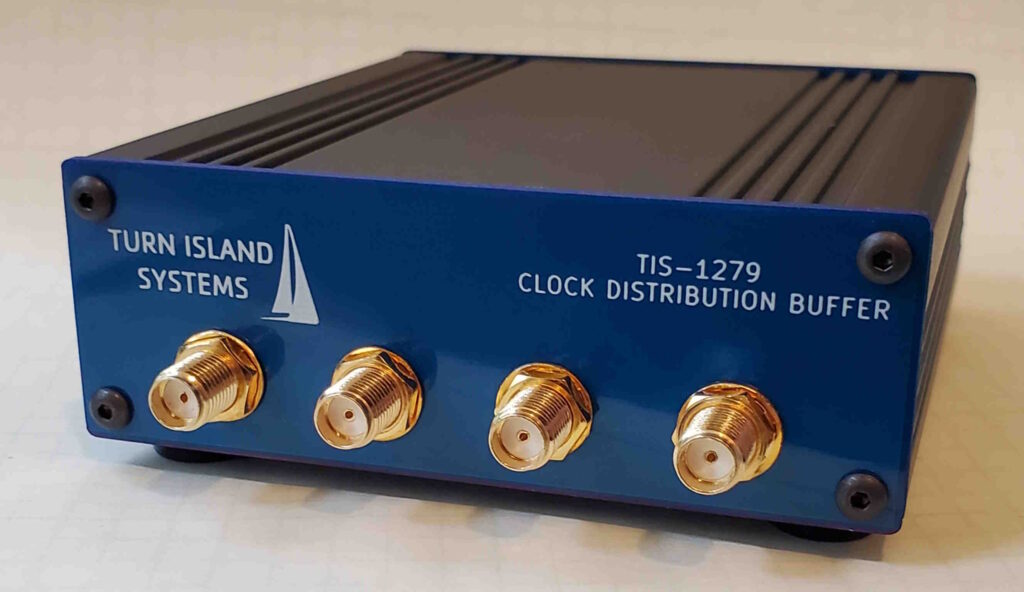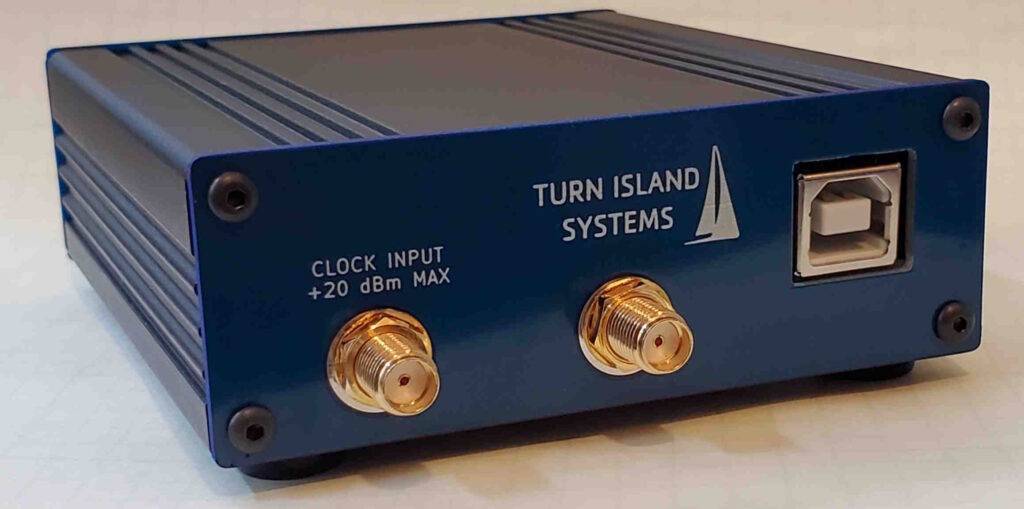

Why do we need to distribute a clock? And how do do it?
For precise frequency measurement and stability analysis we generally need a frequency reference that is better than the thing we are trying to measure. Although we can use standards such as Rubidium clocks or OCXOs, typically we now use a GPS Disciplined Oscillator (GPSDO). Whatever the source, we often need to send this clock to several pieces of gear. A cheap passive splitter will sometimes suffice when sharing a clock among two or three devices (this depends on the output level of the reference, and the input sensitivity of the device), but a more robust solution is a Clock Distribution Buffer.
There are surplus units available, originally designed for distribution of linear video signals, and they work well for 10 MHz (and slower) clocks. But these are generally big rack-mounted units. For my needs I wanted a lightweight portable buffer that I could easily move among projects, and wouldn’t take up half of the area on my desk.
So the TIS-1279 Clock Distribution Buffer was created:
- One input, five outputs. 100 Hz to 100 MHz.
- Input range -20 to +20 dBm @ 10 MHz. Sine or square-wave input. DC-terminated, AC-coupled.
- Output 3.3V P-P square-wave unloaded, 1.6V P-P into 50 Ohm load. Outputs individually driven, AC-coupled.
- 5 ns input-output delay, < 1 ns output skew. (typical)
- USB-powered.
This is a square-wave-output clock buffer, not a linear design.
Price: $120 plus shipping.
Why is it called the TIS-1279? It needed a unique model number, and 1279 is an interesting number, being related to “1729” by the mathematical property of dyslexia numeralis. (Dyslexics Untie!) 1729 is often called the first “Taxicab Number”. Here’s more about 1729 : https://en.wikipedia.org/wiki/1729_(number)
